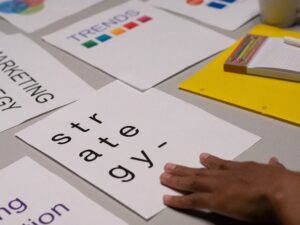I’m sure you have heard of keywords research and keywords, but have you heard of long-tail keywords? In this blog, you’ll learn what long-tail keywords are and how valuable these keywords are to your content strategy.
What are Long-Tail Keywords?
Long-tail keywords are a type of keywords that is more specific and targeted than generic keywords. Businesses often use them to identify specific needs their customers may have and create content and products that cater to those needs.
For example, if you run a pet store, you might use long-tail keywords like “pet food for large breeds” or “pet supplies for puppies” to target potential customers looking for specific products or services. Using these keywords can better understand what your customers need and create content and marketing strategies that speak directly to their needs.

How does it work?
Long-tail keywords are important because they allow businesses to target specific customers with specific needs. By using these keywords, companies can create content that is more relevant to their customers and drive better conversions.
In addition, long-tail keywords tend to have less competition than generic keywords, making them easier to rank on search engines. Businesses that use long-tail keywords can get more traffic and visibility without investing as much time and effort into their SEO campaigns.
Overall, long-tail keywords are a vital tool for businesses of all sizes. By understanding how to use them, companies can create content that is more targeted, relevant, and likely to convert.
Should you use Long-Tail Keywords?
There’s no simple answer to this question – it depends on your business, goals, and competition. But we’ll break down the pros and cons of using long-tail keywords so you can make the best decision for your website.
Pros of Using Long-Tail Keywords
1. More Specific Traffic
Long-tail keywords are more specific, as they usually consist of several words. When you use long-tail keywords in your SEO strategy, you’ll draw in visitors who are already interested in what you have to offer. As a result, these visitors are more likely to convert into customers than people who search for broader terms.
2. Easier To Rank For
Because long-tail keywords are less common, they’re also easier to rank in search engines. So if you’re starting with SEO or have a limited budget for your campaign, using long-tail keywords can help you get results more quickly.
3. Greater Insights Into Your Customers
When you use long-tail keywords, you can learn more about what your customers are looking for. This information can be valuable in shaping your product offerings, website content, and overall marketing strategy.
Cons of Using Long-Tail Keywords
1. Lower Search Volume
The trade-off for using more specific keywords is that they tend to have lower search volume than broader terms, which means you’ll get less traffic from long-tail keywords than you would from head keywords.
2. More Difficult To Target
Because long-tail keywords are specific, it can be difficult to target them with your SEO and marketing efforts. You’ll need to put in more work to research the right keywords and ensure that your website is optimized for them.
3. Limited Reach
Long-tail keywords can also limit the reach of your website, as they’ll only attract people who are specifically searching for those terms. If you want to broaden your audience, you’ll need to use a mix of long-tail and head keywords.
So, should you use long-tail keywords? It depends on your business, audience, and your SEO goals. But whatever you decide, be sure to put in the time and effort needed to rank for those keywords and reach your target visitors.
What are the Two Types of Long-Tail Keywords?
Long-tail keywords are specific to what the user is searching for. They are often more descriptive and can be highly niche. As a result, it’s easier for businesses to rank well on searches without competing with thousands of other websites. There are two main types of long-tail keywords:
Supporting Long-Tail Keywords
Supporting long-tail keywords is for more general search terms. They help direct users to the right section of your content and increase overall search ranking. Some common supporting long-tail keywords include “best”, “top”, and “recommended”.
One of the main benefits of using supporting long-tail keywords is that they are more relevant to the user’s search, helping them find what they are looking for much faster. Because these keywords tend to be less competitive, websites have a better chance of ranking higher on search results pages.
Another benefit of using supporting long-tail keywords is that they can help improve click-through rates. When your website appears near the top of the search results page, users are more likely to click on it.

Topical long-tail keywords
Topical long-tail keywords are more specific and targeted to your particular industry or niche. These keywords typically describe a product or service in great detail, making it easier for businesses to rank well on search results pages for more competitive terms.
Using topical long-tail keywords can help increase traffic to your website and are less competitive.
They can help improve conversion rates. If users exactly find what they are looking for on your website, they are more likely to take action, such as making a purchase or signing up for a service.
In conclusion, long-tail keywords are a vital tool for businesses of all sizes. Businesses can improve their search ranking, click-through rate, and conversion rate by using these keywords. If you are not sure which keywords to use, start by brainstorming a list.

How to find Long-tail keywords?
Finding the right keywords is essential for any business looking to succeed online. But with so many options and variations, it can be tough to know where to start. In this section, we’re going to talk about finding long-tail keywords.
Google’s Autosuggest
If you’re looking to find long-tail keywords, Google’s Autosuggest feature is a great place to start.
Google’s Autosuggest is an effortless and effective way to discover long-tail keywords that are relevant to your target audience. With just a few clicks, you can get tons of useful information about what people are actually searching online.
To use Autosuggest, simply start typing in a keyword or phrase related to your topic into the Google search bar. You’ll see a list of suggested search queries appear below the search bar as you type. These are the terms that people are searching for on Google.
Take a look at the example below:
As you can see, Autosuggest quickly shows you a number of relevant long-tail keywords that people are searching for related to your topic. You can then use any of these terms in your article to improve its search engine rankings and help bring more traffic to your website.
So the next time you’re looking to boost your search engine traffic, try Autosuggest for yourself and discover some great long-tail keywords to use in your content.
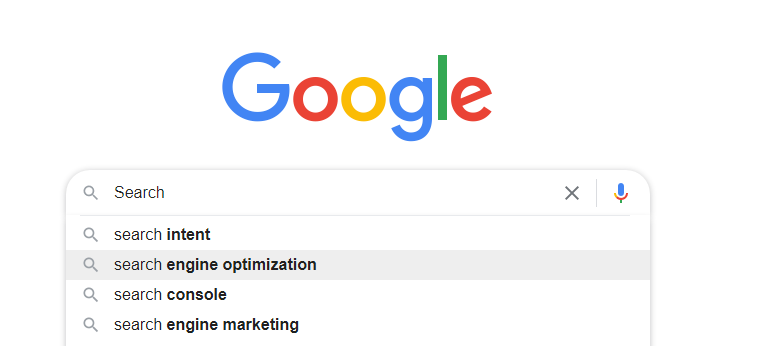
Use Keyword Research Tools
Several keyword research tools are available online to help you find long-tail keywords related to your topic.
Some of the most popular keyword research tools include Google AdWords Keyword Planner, SEMrush, and KWFinder.
These tools work by helping you identify popular keywords that people are searching for on Google and other search engines.
How to Use the Tools?
AdWords Keyword Planner
Simply head to adwords.google.com and sign in to your Google account. Then, type in a keyword or phrase related to your topic into the search bar at the top of the screen and hit “Get Ideas”.
Next, you’ll see a list of related keywords, along with their search volumes and other helpful information like competition level. You can then sort these keywords by different metrics to find the ones that are most relevant and targeted to your audience.
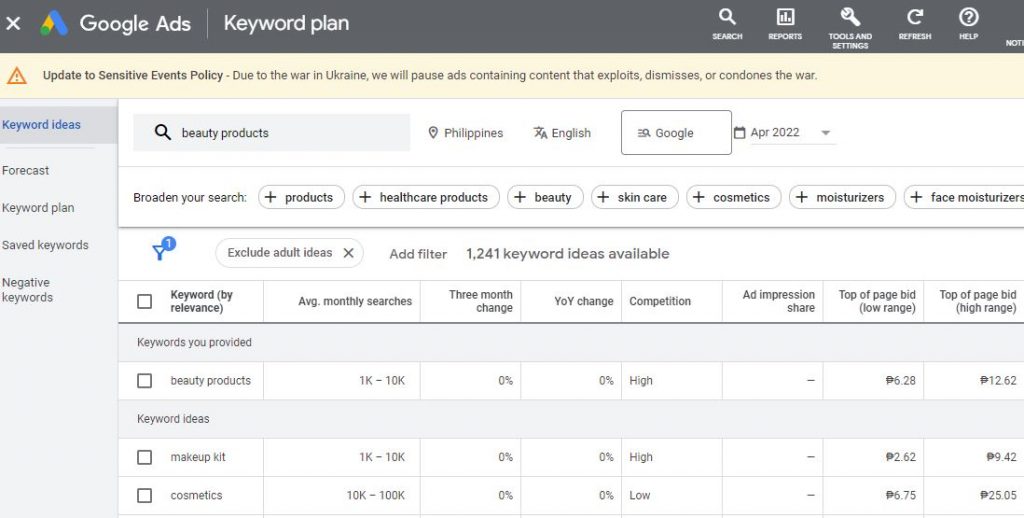
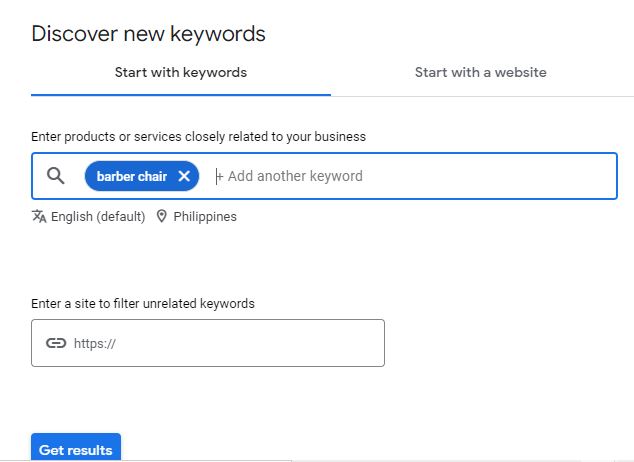
SEMrush
It offers powerful keyword research tools that you can use to discover long-tail keywords related to your topic. Enter a keyword or phrase into the search bar on their website, and you’ll see a list of related keywords, their search volumes and other helpful information.

KWFinder
This is another great tool for finding long-tail keywords related to your topic. Enter a keyword or phrase into the search bar on their website, and you’ll see a list of related keywords, their search volumes and other helpful information.
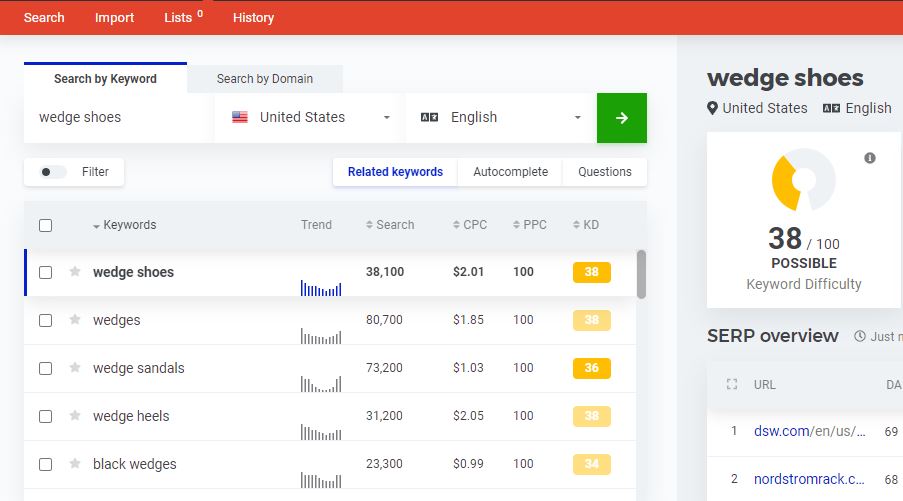
These tools are all useful for helping you find long-tail keywords that are relevant to your target audience. So if you like to boost your traffic and search engine rankings, be sure to give them a try.

Spy your competitors
Another effective way to find long-tail keywords is to spy on your competitors. By looking at what keywords your competitors use in their content, you can get a sense of the most relevant and popular terms with your target audience.
There are a number of tools and tactics you can use to spy on your competitors’ content.
One of the simplest ways is to search for your main keyword on Google and see what comes up. For example, if you’re in the fitness niche, you could search for “fitness” and see what articles and websites appear in the top results.
This will give you a good idea of the types of content that are ranking well for your main keyword.
You can also use Google AdWords to spy on your competitors. Simply head to adwords.google.com and sign in to your account. Then, click on the “Keywords” tab and enter your competitor’s website into the “Site” field.
This will show you all of the keywords that your competitor is currently ranking for and their search volumes and other useful metrics.
Another tool for spying on your competitors is SEMrush. This can provide you with a wealth of competitive data about your competitors’ websites and content, including their targeting keywords. Enter any website into the search bar on their website, and you’ll see a list of all the keywords your competitor is targeting, as well as their search volumes and other useful metrics.
If you’re serious about finding long-tail keywords relevant to your audience, then spying on your competitors is definitely worth considering. With the right tools and tactics, you can uncover some of the most valuable keywords in your niche.
Key Takeaways
Long-tail keywords are more specific than head keywords, which means they’re easier to rank for but also attract a smaller audience.
Using long-tail keywords can help you get more specific insights into your customers’ needs and desires.
If you’re just starting with SEO or have a limited budget, using long-tail keywords can be a good way to get results quickly.



